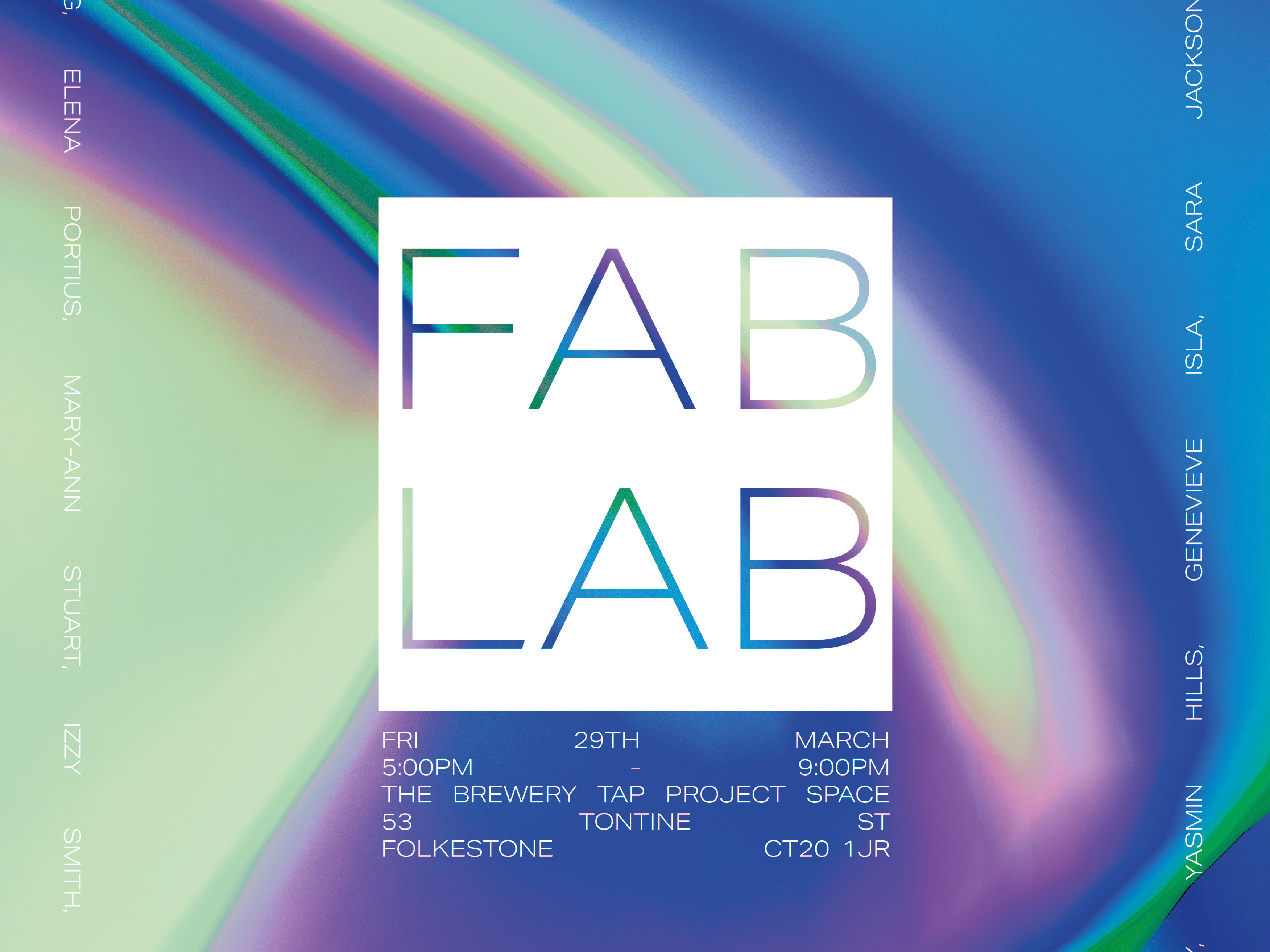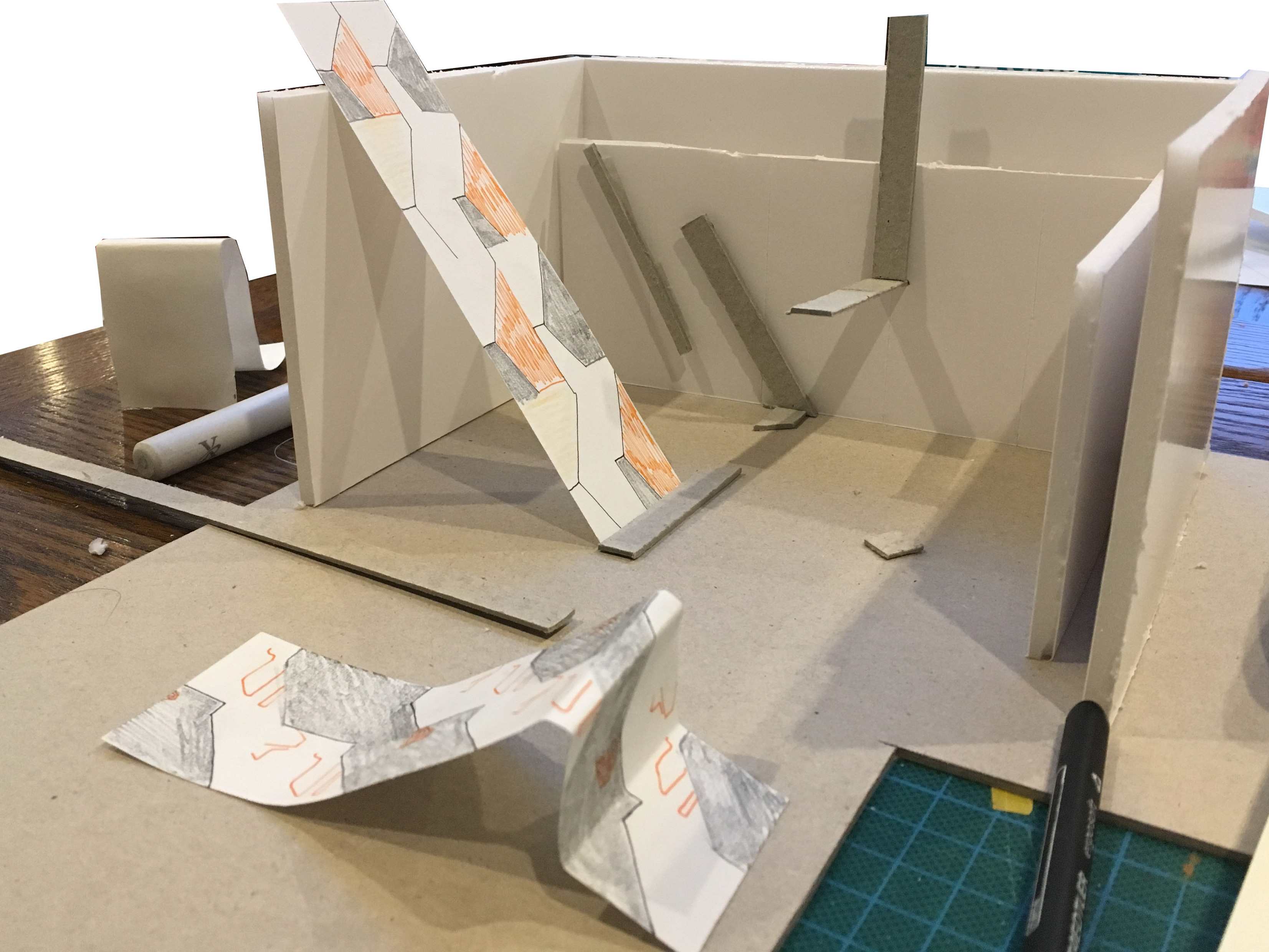After the MDF wall, I want to use the wall to create embossings, so I can play with other material and light plays within the space. I'm liking the idea of keeping materials raw (seems to be a common thread in the studio space with other peers). I may lightly add other colours (which i have gathered from my surroundings) by silkscreening textures onto the materials.
I've enjoyed manipulating the materiality of the MDF, letting the etched surfaces become the paint for highlighting the different areas. This has got me thinking deeper into the use of materials and colours and what rules I'm going to set myself.
Playing with the idea of composition and the audiences reaction to the piece, the light acts as a framing composition for the audience to take pictures of and engage with the work. The light is slightly lower from the original recordings which the carving is made from, so new compositions are being created.
I'm going to hold onto the wall to record the light movements and be something that i can constantly respond too with new thoughts for now as I start to explore other materials and areas of the uni.
Herbert Read Gallery
The Herbert Read Gallery was empty, so I took the chance to go scope it out and see what intrigues me. I was drawn to the compositions which happened on the walls from the spot lights. Even though this light is not naturally occurring, I was responding to the situation as it wasn't controlled by me.
The composition from the photo on the far left caught my eye the most. I enjoy the ghost like shapes from the spot lights and the 3 different sizes. The reflections on the floor grab my eye. I started to think about engraving into the wall where the spot lights sit, and using paint that is light reflecting.
The next two photos respond to the shape from the beams, using them to frame and capture light.
The last photo captures all the different colours coming from the spot lights, I really like all the organic shapes coming from the spot lights.



Olafur Eliasson
Window Projection - uses a gobo
With colour swatches from the Herbert Read, I created my inks for silk screen - each colour was made from a mixture of the previous colours made.
MDF dust.
From use the router, it accumulated a lot of dust and so i decided to collect some, thinking out positive and negative space. Using the Negative waist to make a positive.
I mixed the dust with PVA glue and acrylic to see if i could colour MDF.
Played with the texture of wood wool effect. When placed onto the laser cut's looks a bit like food.
Acoustics
After doing an adobe audition workshop with connor - I was intrigued with the acoustic wall - this extra layer of textures set on walls and surrounding to absorb or disturb sound waves - influencing our perception of the environment.
This idea of the walls affecting the sound intrigues me - I record the sound the humming from the air vents in the room.
I got a book on 'sound materials' (729.29 ADA) from the library.
Curtains - control light and absorb sound
Carpet - absorb sound
I wrote down all the different styles of sound absorption materials and layering techniques.
I really intrigued in there aesthetic quality and how it can be used to distort our perception of space.





All the layers of materials and wood layered up to create these compositions - led me onto playing with the off cuts to create the negative spaces of hexagons.
Bruce Nauman- Sound Breaking Wall
Speakers hidden in the walls he put up - wall boards
Similar colours to mine
Looking back at framing with the shapes
colours and materials - the yellow paper from the sketch book, the mount board material full of specks and the plaster board, once etched reveal the bright white plaster.
Plaster board- houses two colours Im playing with and plays with layering and depth.
The plaster edging is similar qualities to the breeze blocks.
Thinking of materials - I enjoyed the size and shape of Louisa's coasters and asked her to make some for me so i could play with printing on them and play with the idea of tiling surfaces with them.
When printing on them it highlighted the creases from the plastic mould.
Then when printing back onto paper - it kept the ghost image from the concrete tiles.
Another factor discovered was when Louisa dried the concrete on my newsprint, the acidic qualities of concrete turned the paper a similar yellow to the yellow I was printing with.
Laser cut
Playing with the cable tray pattern. So many negative spaces to play with.
Also cut out various sizes of the cable tray and rsg negative spaces. Use them to experiment with constructing various compositions.
Using the cable tray negatives to tile surfaces and come up with various patterns. Was layering MDF on MDF (Louisa's MDF plinth)
Incorporating my shapes into Sam's RSG.
Playing with a tiling effect on Louisa's MDF Plinth. (Art deco feel)
Thinking about the shadow casts, placing objects (mini plinths or structures with this pattern ) around the space to play with the sun.
The Shadow Gap - Between wall and board. Think about this gap for the router walls - placing them with a gap from the wall.
Thinking about leaning ?
Playing with the layering aspect of ply wood. Router at specific depths.


